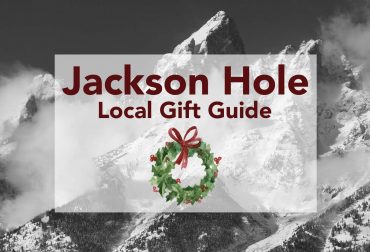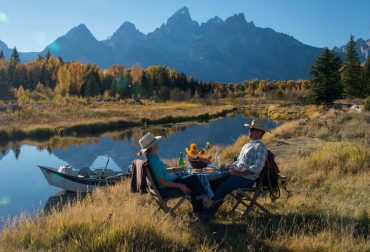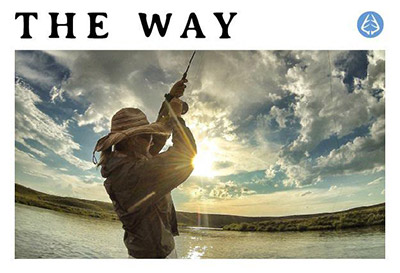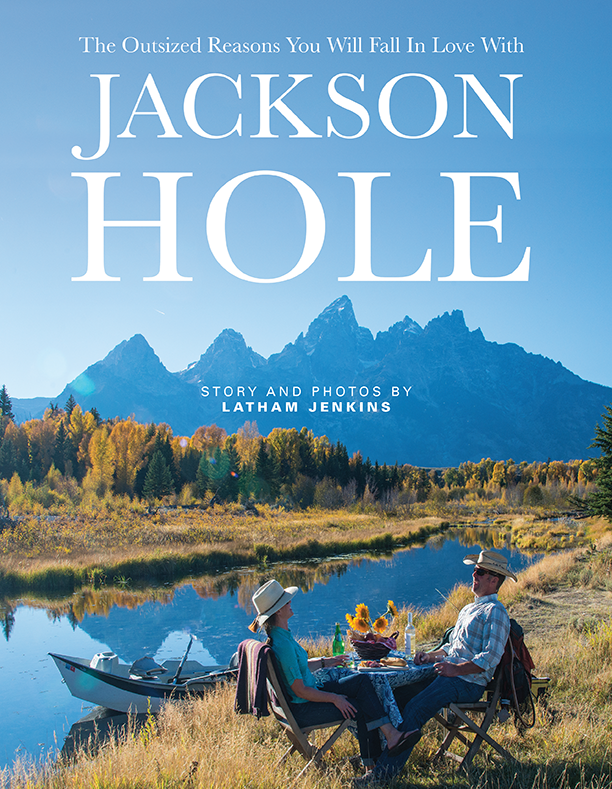The one animal both visitors and residents of Jackson Hole most want to see is the moose. And while spotting this iconic ungulate at any time of the year is certainly possible, we have the scoop on when and where you can truly enjoy the most special (and probable) of sightings.
Here’s the little-known secret: Late autumn and early winter provides a magical window of time where you can spot majestic bull moose up close and personal in the Antelope Flats/town of Kelly area of Grand Teton National Park. With the Teton Range as a backdrop, the perfect photo opp is literally yours for the taking.
Imagine taking a scenic drive out to Kelly and beyond towards the Gros Ventre, simply marveling at winter’s beauty out here, when suddenly you spy a group of huge bull moose ambling about in the snow-covered sage flats. It’s an enchanting wildlife stumble-upon that most people don’t have the good fortune to experience.
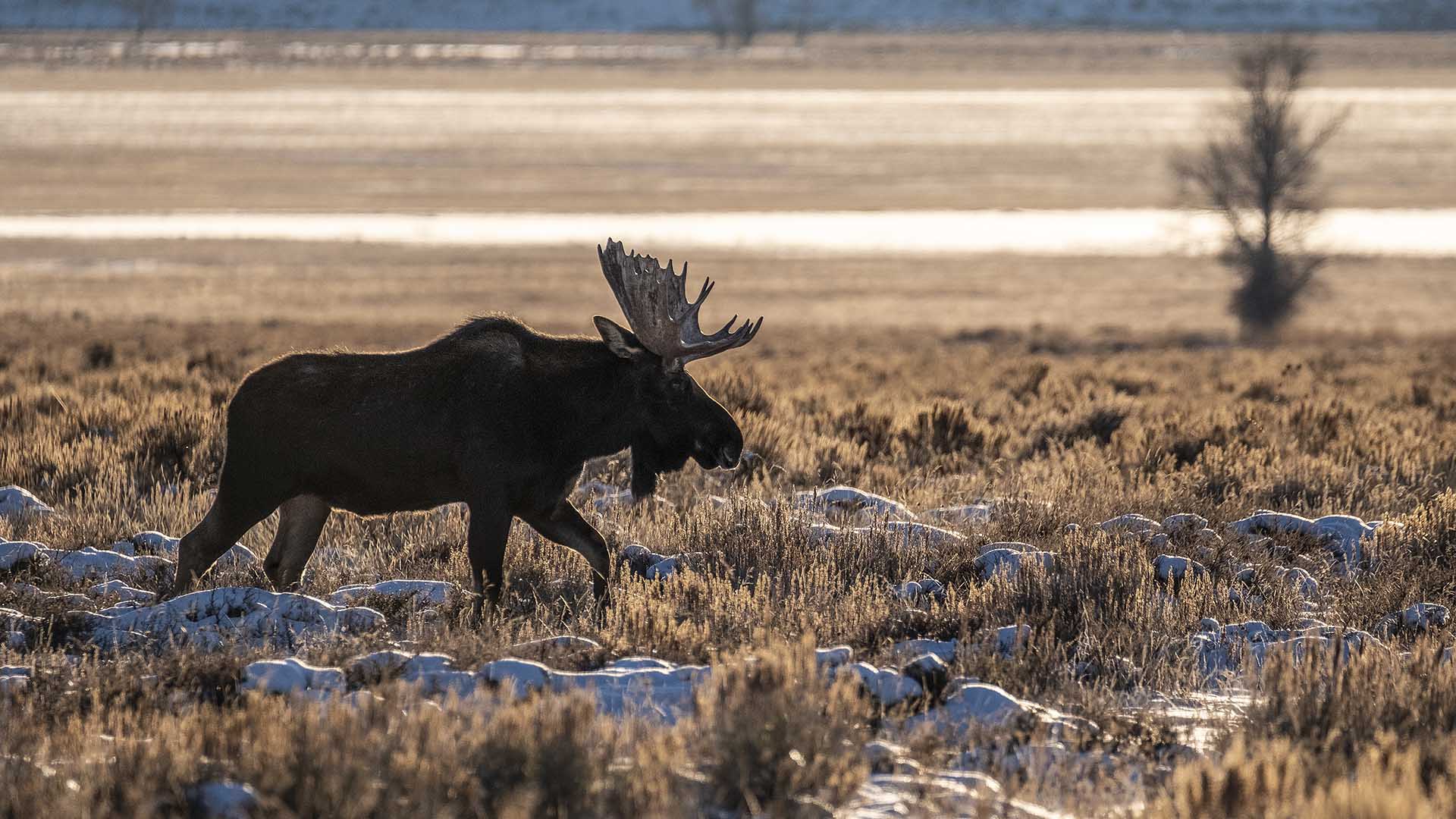
Bull moose in the flats. Photo: © Latham Jenkins
“November and December is the easiest time to see and interact with moose,” says Paul Brown, Teton Science School senior biologist and wildlife tour guide with the schools’ Wildlife Expeditions. “It’s really special at this time of year.”
Brown explains that the big reason it’s easier to observe moose in winter is because in summer they are much harder to find due to their nutritional preferences and the heat.
“This is because moose prefer to feed primarily on leaves found on willow, aspen and cottonwood trees so it’s not always easy to see them in the thick near river bottoms where it’s cooler in summer,” says Brown. “But in winter, heat stress is not an issue.”
Ergo, both female and male moose take a stroll out into the wide open flats.
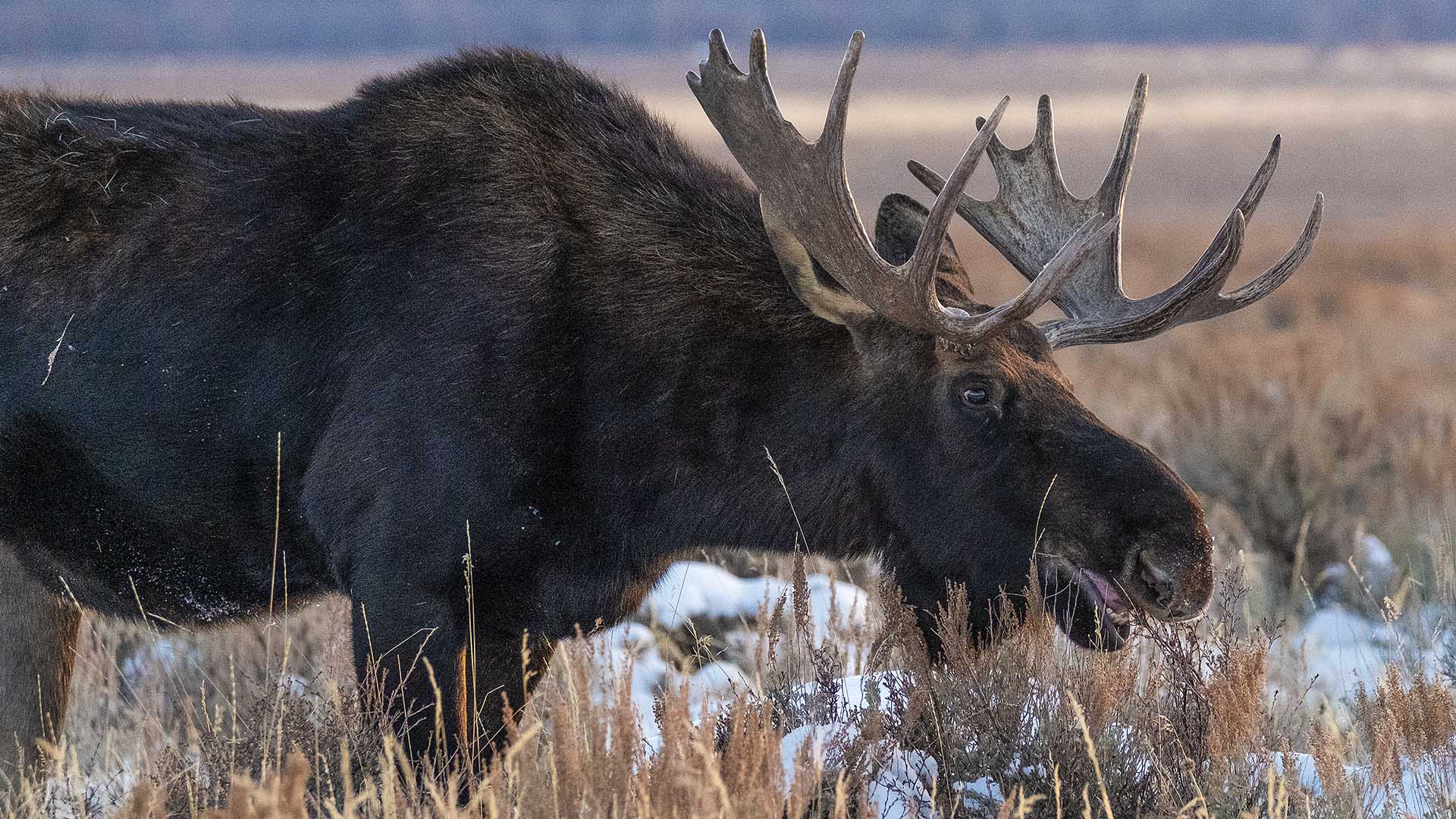
Bull moose feeding on bitterbrush. Photo: © Latham Jenkins
Bitterbrush rules
Not only is the climate more “moose-friendly” from around mid-November and up until late December, early January, but the bitterbrush the moose love to munch on is available in quantity in the sage flats — particularly near Ditch Creek, Brown says.
Bitterbrush is a prime food for moose in the sage flats and because this ground bush hasn’t been completely buried by snow yet, it’s easier to feed on. Brown says it’s the bitterbrush — as opposed to sage — that is more palatable to the moose.
“It’s all about the bitterbrush,” says Brown. “That’s why so many moose are out, especially around Ditch Creek. The soil around there is better for bitterbrush — you can see pockets of it.”
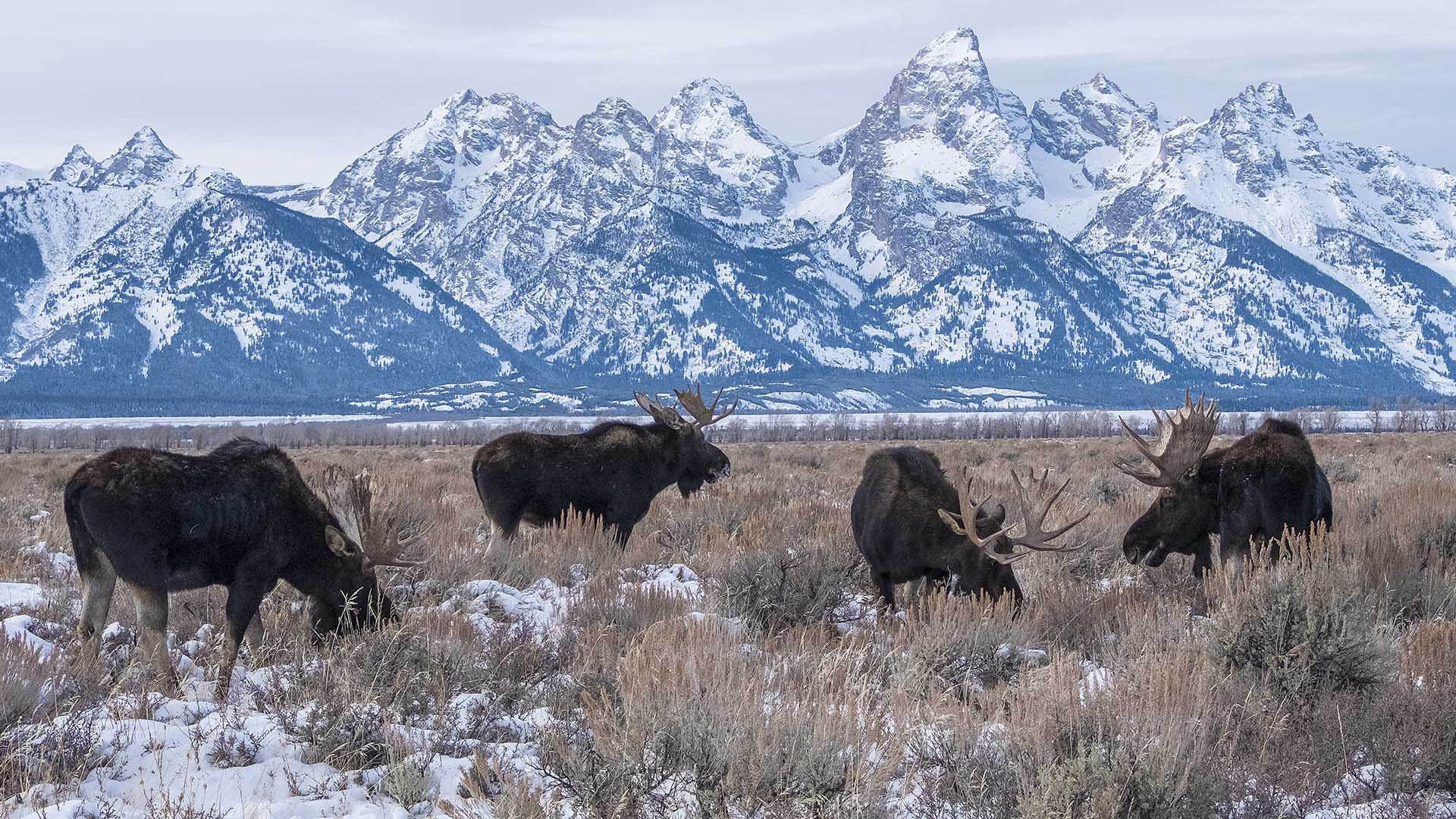
Bull moose congregating around the food source. Photo: © Latham Jenkins
He says those pockets are also found around Moose Junction and Dornan’s, out by the airport and at the base of Blacktail Butte. There’s a higher concentration, however, in the Kelly area.
“That’s why so many gather,” Brown says. He reports he has seen up to 15 to 20 moose congregating in early winter in that area.
The amount of moose that you might be able to see and the length of time they hang out is weather- and snowfall-dependent. Moose don’t dig through the snow — they don’t want to waste energy — so therefore are more likely to eat what’s above the snowpack.
Once the bitterbrush is buried they head back to the river where trees and twigs are plentiful. However, once March rolls around and the snow begins to melt, the bitterbrush is exposed again and you may also have a chance to observe the moose filling their tummies with the brush.
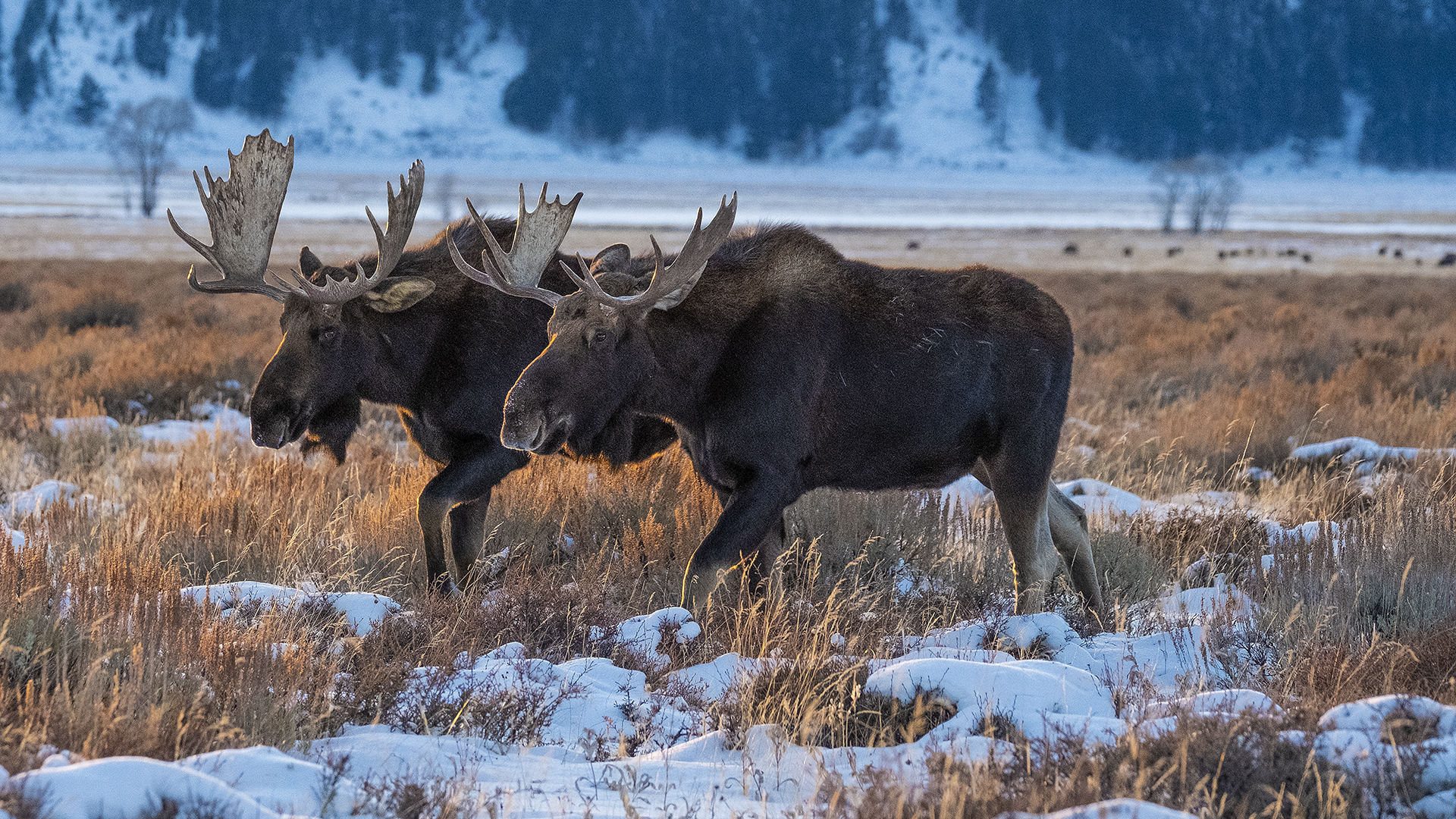
Bull moose with bison in the background in Grand Teton National Park, Wyoming. Photo: © Latham Jenkins
Chance Encounters
To call a chance encounter with these incredible creatures in winter “magical” is really an understatement. Not only is it a jaw-dropping moment to see moose practically silhouetted against the snow and mountains — the male’s antlers impressively large and stark against the sky — but sometimes the animals are fairly close to the road.
“Moose aren’t necessarily fearful of people in Jackson Hole and Grand Teton National Park,” explains Brown. “You can approach pretty closely, but don’t get closer than 25 yards, especially with your car. In winter they are trying to conserve energy, therefore they don’t want to burn any more calories, so they’re less likely to run away when people are close.”
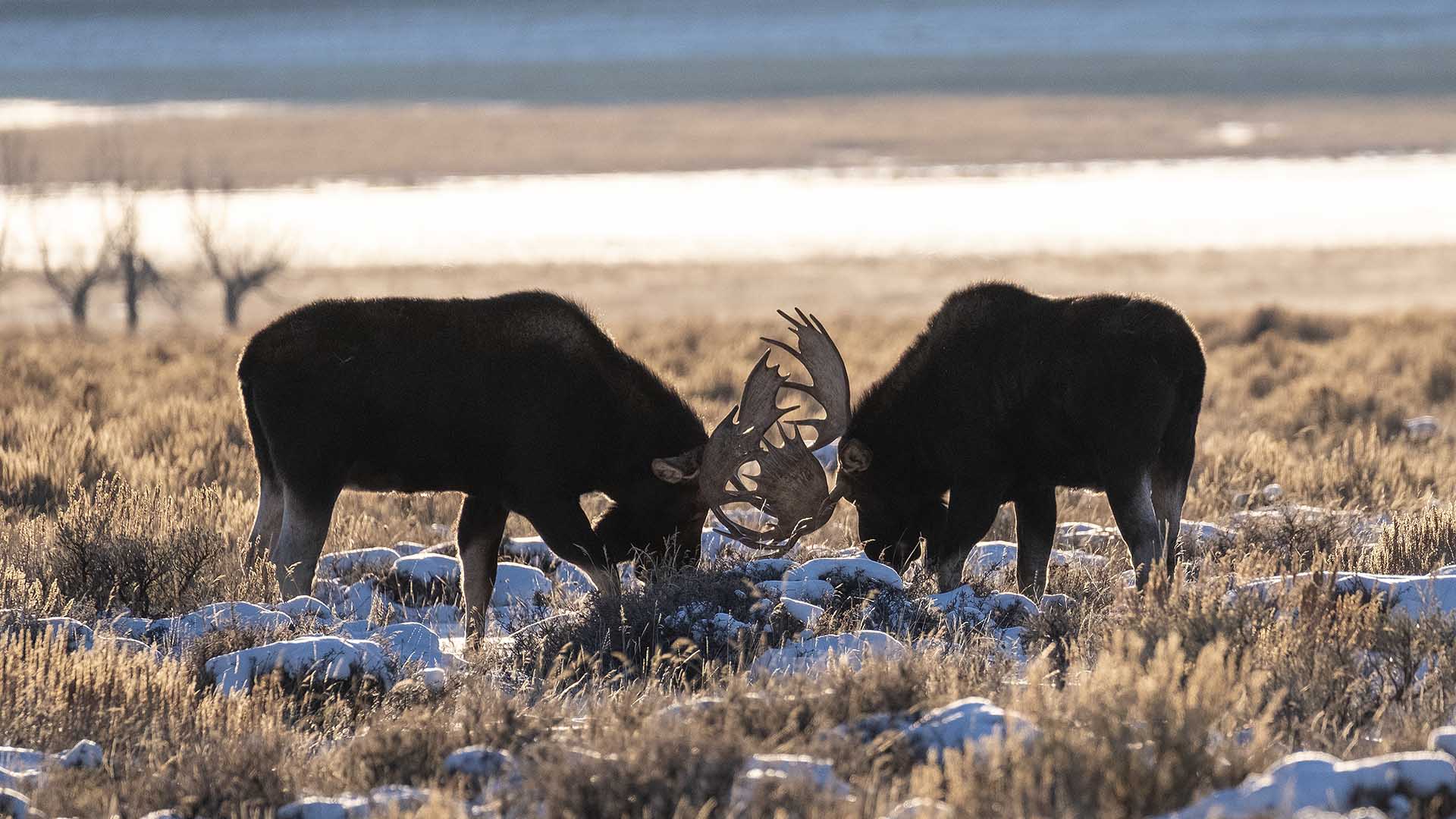
Bull moose sparring. Photo: © Latham Jenkins
In mid- to late December, the bigger bulls in their prime start to shed their antlers. Brown says that some carry their antlers further into January, but those tend to be younger, smaller bulls, animals who aren’t at same hormonal level as the older ones. Please note: It is not legal to collect antlers in the park!
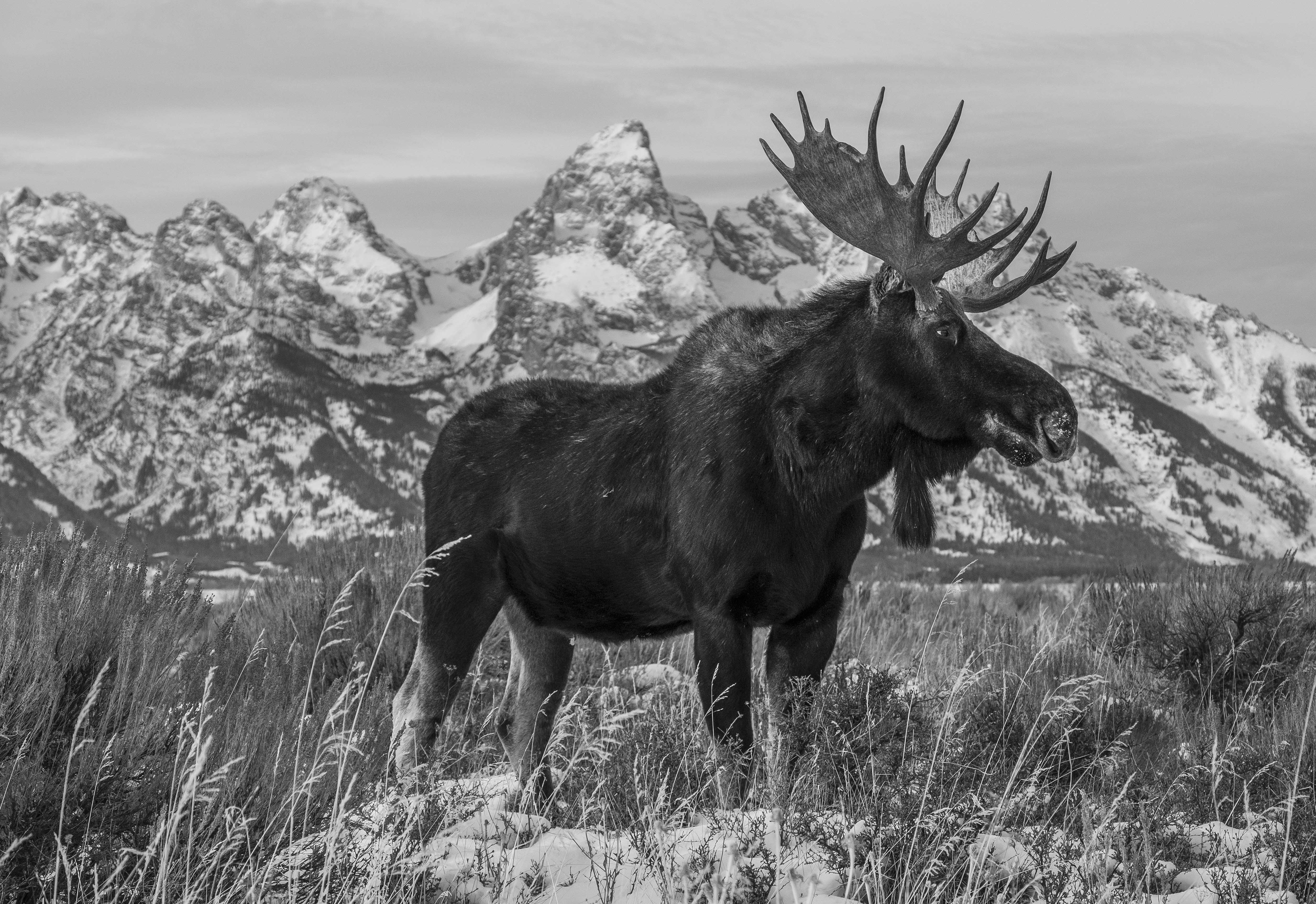
Bull moose and the Teton Range, Grand Teton National Park. Photo: © Latham Jenkins
What is definitely legal, though, is happily observing these ungulates frolicking in the snow during this brief, spellbinding moment of the year.
Note: Taking a guided wildlife tour with Teton Science Schools is an even better way to see not only moose, but other wildlife such as bison, elk, foxes and coyotes. Your knowledgeable and trained guide will offer tips and information on the animals in our ecosystem that will prove invaluable to you.
